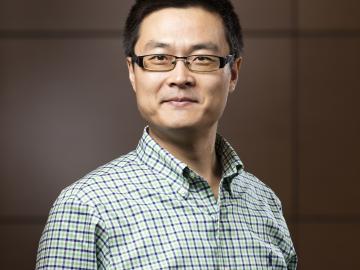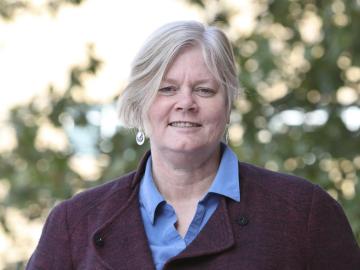Filter News
Area of Research
- (-) Biology and Environment (119)
- (-) Computer Science (4)
- Advanced Manufacturing (7)
- Biological Systems (3)
- Biology and Soft Matter (4)
- Building Technologies (3)
- Chemical and Engineering Materials (3)
- Chemistry and Physics at Interfaces (7)
- Clean Energy (208)
- Climate and Environmental Systems (7)
- Computational Biology (1)
- Computational Chemistry (5)
- Computational Engineering (2)
- Data (1)
- Earth Sciences (1)
- Electricity and Smart Grid (2)
- Energy Frontier Research Centers (7)
- Energy Sciences (2)
- Fuel Cycle Science and Technology (2)
- Functional Materials for Energy (10)
- Fusion and Fission (43)
- Fusion Energy (7)
- Geographic Information Science and Technology (1)
- Isotopes (24)
- Materials (186)
- Materials Characterization (2)
- Materials for Computing (17)
- Materials Synthesis from Atoms to Systems (8)
- Materials Under Extremes (8)
- National Security (53)
- Neutron Data Analysis and Visualization (2)
- Neutron Science (83)
- Nuclear Science and Technology (35)
- Quantum Condensed Matter (3)
- Quantum information Science (5)
- Renewable Energy (2)
- Sensors and Controls (2)
- Supercomputing (172)
- Transportation Systems (6)
News Type
News Topics
- 3-D Printing/Advanced Manufacturing (5)
- Advanced Reactors (1)
- Artificial Intelligence (8)
- Big Data (8)
- Bioenergy (29)
- Biology (48)
- Biomedical (9)
- Biotechnology (6)
- Chemical Sciences (8)
- Clean Water (8)
- Climate Change (26)
- Composites (2)
- Computer Science (15)
- Coronavirus (6)
- Critical Materials (1)
- Cybersecurity (1)
- Decarbonization (15)
- Energy Storage (5)
- Environment (63)
- Exascale Computing (5)
- Frontier (3)
- Fusion (1)
- High-Performance Computing (15)
- Hydropower (5)
- Isotopes (2)
- Machine Learning (7)
- Materials (8)
- Materials Science (5)
- Mathematics (3)
- Mercury (6)
- Microscopy (9)
- Molten Salt (1)
- Nanotechnology (7)
- National Security (2)
- Net Zero (1)
- Neutron Science (3)
- Nuclear Energy (1)
- Partnerships (1)
- Physics (2)
- Polymers (2)
- Renewable Energy (1)
- Security (1)
- Simulation (10)
- Summit (8)
- Sustainable Energy (18)
- Transformational Challenge Reactor (1)
- Transportation (2)
Media Contacts

CCSI scientist Jiafu Mao, of the Terrestrial Systems Modeling group in the Environmental Sciences Division, parlayed his interest in physics and mathematics as a student in China into a field of study he has always found interesting

At the confluence of energy and ecology is where Henriette “Yetta” Jager has found her calling. A senior scientist in the Environmental Sciences Division, Yetta uses models to look for win-win opportunities to produce more energy without harming fish and wildlife. Yetta’s research for the US D...

Researchers at the Department of Energy’s Oak Ridge National Laboratory got a surprise when they built a highly ordered lattice by layering thin films containing lanthanum, strontium, oxygen and iron. Although each layer had an intrinsically nonpolar (symmetric) distribution of electrical charges, the lattice had an asymmetric distribution of charges. The charge asymmetry creates an extra “switch” that brings new functionalities to materials when “flipped” by external stimuli such as electric fields or mechanical strain. This makes polar materials useful for devices such as sensors and actuators.




